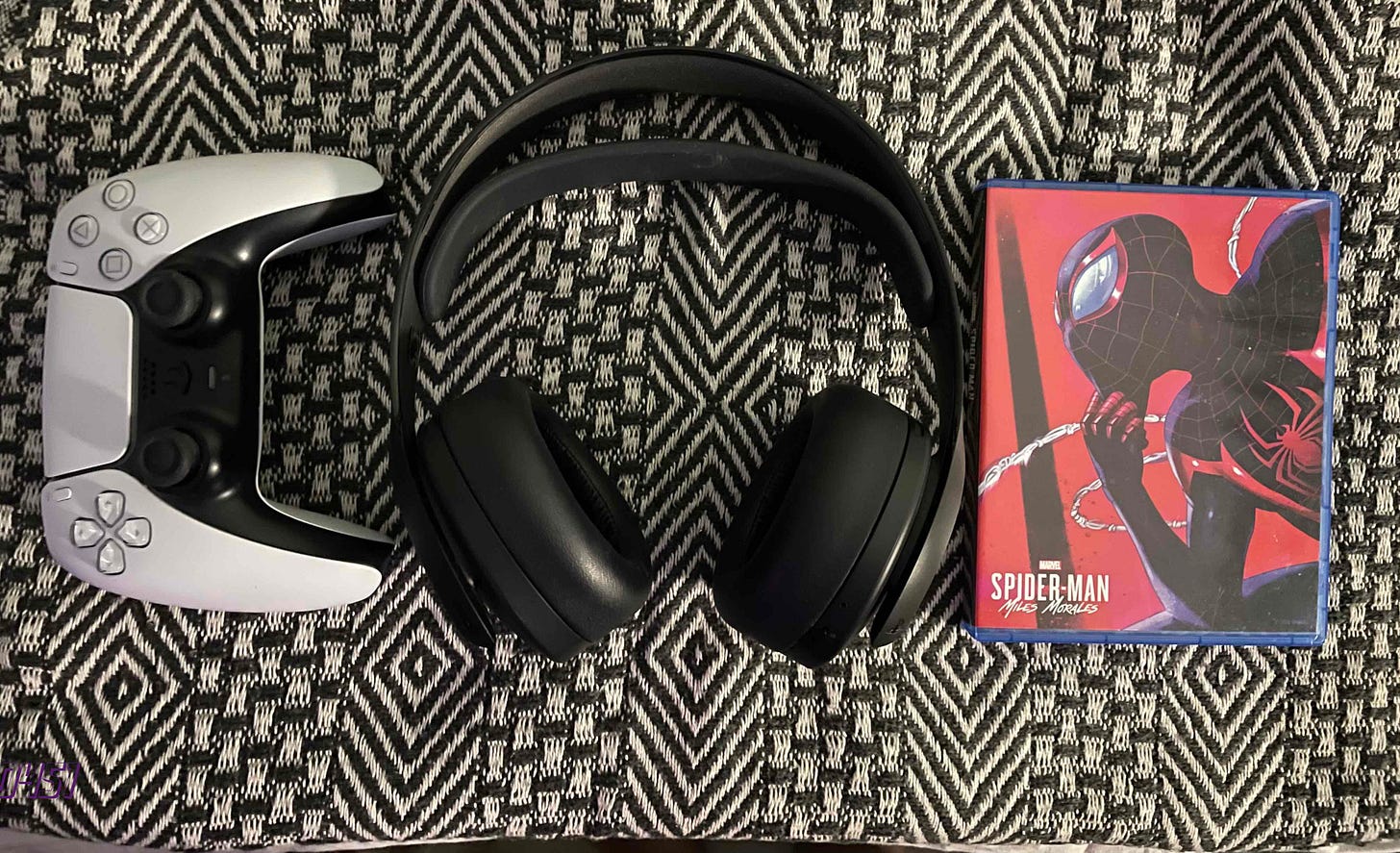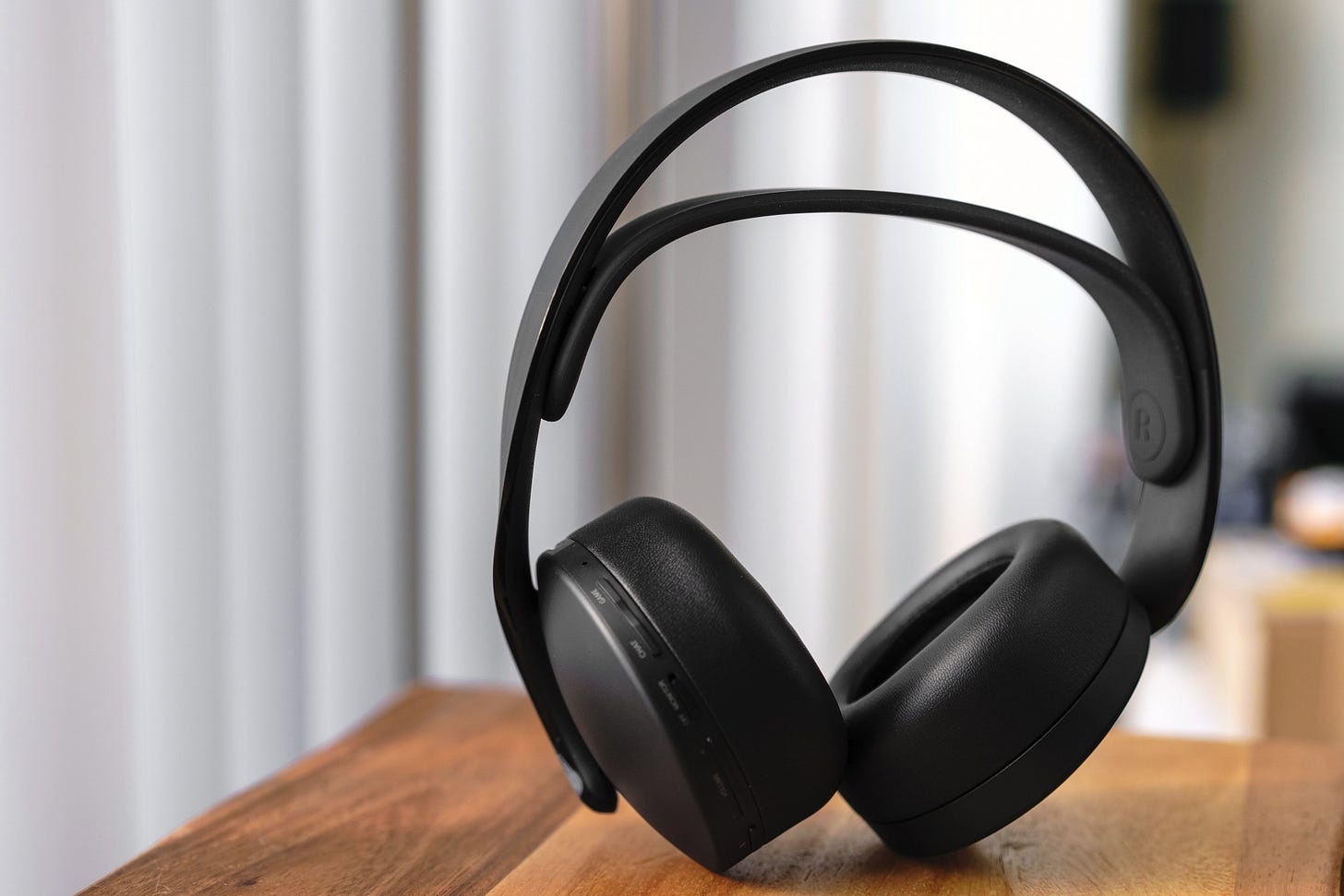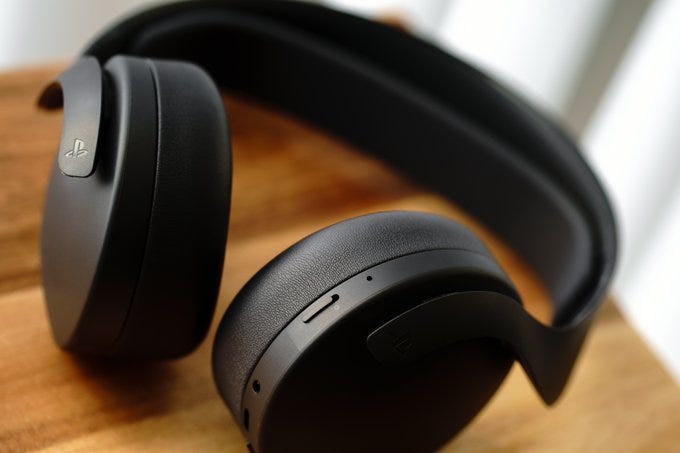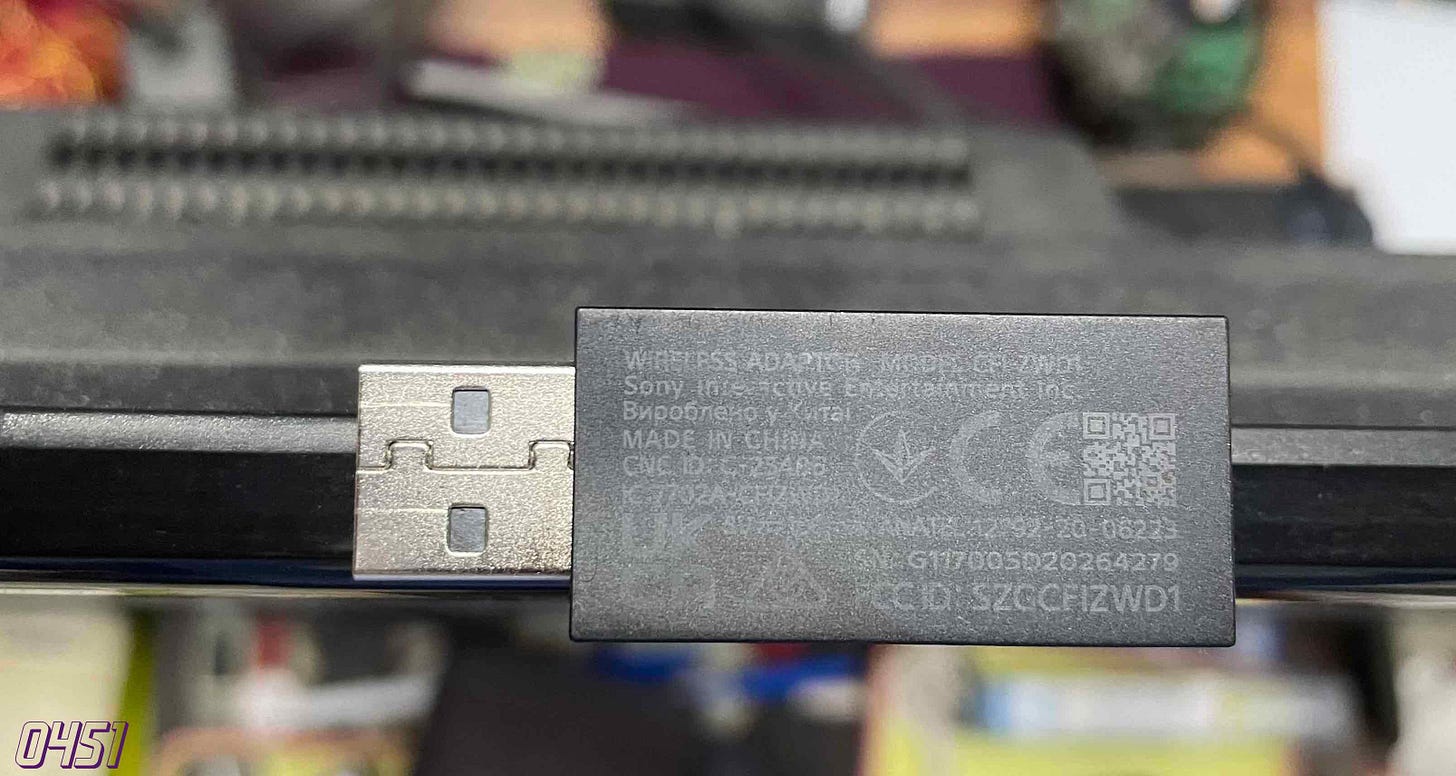While supply chain issues have ensured that PS5 and Xbox Series X availability isn't ideal, in India at least, sales have been strong enough on Sony's end to warrant a deeper foray into accessories. The Pulse 3D Headset in particular, finally made its debut in the country at the end of 2021 in both standard white and Midnight Black variants. The former was to launch with the PS5 in India back in February 2021, but that was delayed likely due to lack of BIS certification that was expanded to include wireless headphones too.
As is with most things PlayStation in India, Pulse 3D Headsets sell out the moment they're in-stock retailers tell me. And they're usually bought by existing customers that have already bought the PS5 from them.
"We have a huge wait list of customers that want the Pulse 3D Headset," says one Bengaluru-based retailer speaking to on condition of anonymity fearing retribution. "This is because despite moving in excess of 200 PS5 consoles we only get around five to six Pulse 3D Headsets at best."
It's an interesting phenomenon when you consider how much it costs. With a retail price of Rs. 8,590 it's on the expensive side compared to the likes of other wireless offerings like Logitech G435 that sell for Rs. 6,995. Rather, it's in line with Microsoft's Xbox Wireless Headset that has a Rs. 8,990 price tag. And for greater context adding another Rs. 1,500 gets you a mid-range Android smartphone.
Nonetheless, for most of last generation neither Sony nor Microsoft made any attempt to bring their audio offerings in any meaningful way with parallel importers and the grey market stepping in to meet any demand. The reasoning at the time was that consumers weren't interested in console accessories beyond buying an extra controller.
The demand for the Pulse 3D Headset however, outweighs both the aforementioned wireless headsets combined. What's more is, customer requests for it are close to what most retailers see for DualSense controllers.
Why does it matter to retail?
According to retailers with a presence in several cities, demand for the PS5 in the usual markets like Mumbai, Delhi, and Bengaluru has relatively stabilised. While the demand in tier 2 cities is still strong, that on its own is not enough to pick up the slack. This is where accessories like the Pulse 3D Headset and Charging Dock come in handy. For one simple reason: margins.
PS5 games usually have an 18 to 20 percent margin at retail while PSN subscriptions have an eight to 10 percent margin and prepaid cards have about four to seven percent. Accessories on the other hand, traditionally have a margin of about 40 percent.
Though I suspect Sony doesn't go beyond 25 percent for the Pulse 3D Headset and its other accessories. Given the higher price tag and rampant demand, retailers are content to stock them all the same.
Who is buying the Pulse 3D Headset and why is it so popular?
A lot of customers I spoke to simply pointed at 3D audio being the defining reason. To them, Sony's emphasis on audio in the run up to the PS5's launch made it a no-brainer.
"I wanted a hassle-free 3D audio option instead of going through a million reviews," says Lucknow-based Dullu Mehrotra. A consultant by trade, he's been a lifelong console gamer since the NES days. "This seems to tick all the boxes."
Retailers tell me that it's not just veteran gamers buying it.
"Most of our buyers are existing customers, the sort that have been with us for about two years at least," says a purchase manager at an independent game store in Mumbai under condition of anonymity as they are not allowed to talk to the "press" (their words, not mine). "But we get the occasional first-time console buyer asking for it. We can tell they're first-timers because they flinch when we explain that it's a Rs. 8,590 product. Around half of the time they buy something else like what Logitech has for offer, it's rare but they do bite on occasion. Isn't a problem for us because we sell out of the Pulse 3D Headset fast anyway."
"It's the best 'cheap' headset," says Rahul Singh, self-professed Call of Duty addict by night and accountant by day, he's gone through his fair share of headsets. "They've upped build quality as well so it wont break. After this the jump is straight to [SteelSeries] Arctis and Astros."
Singh makes a valid point. While SteelSeries does have an India presence, the Arctic 7 costs nearly twice as much at retail and while Logitech has an expansive India presence, it doesn't seem particularly keen to bring the Astro Gaming range of headphones just yet.
In fact, when I was tracking the PS5 India stock situation for The Mako Reactor and IGN India, reader requests regarding the Pulse 3D Headset availability were right up there with queries regarding the PS5 availability itself. At this juncture this seems like the rare occurrence where demand is in-line with actual community chatter for it instead of an echo chamber.
My time with the Midnight Black Pulse 3D Headset
I was fortunate enough to spend some quality time with the Midnight Black variant of the Pulse 3D Headset over the last couple of weeks courtesy of Sony. The sound was definitely an upgrade, coming from the built-in speakers of a Xiaomi Mi TV 4A and my go to HyperX Cloud Stinger Core.
With 3D audio enabled though, the experience was transformative, allowing me to soak up the details that would usually go amiss such as the impact of rain and thunder in Ghost of Tsushima Director's Cut or exact direction of an incoming attack from one of Demon's Souls many foes. Even moments of sheer terror, like attempting to avoid BTs in Death Stranding Director's Cut was heightened with 3D audio on the PS5.
The gains were less in multiplayer, firing up Call of Duty: Vanguard with 3D audio on made everything feel and sound messier than it already was — and footsteps were hard enough to detect as it is with normal audio. 3D audio via the Pulse Headset did little to fix this. It probably has more to do with developer Sledgehammer than the tech itself, which should hopefully be fixed with an update.
My biggest problem though, is the longevity of the headset. Much like the PS4 Gold Headset, the Pulse 3D retains a lot of its build quality and materials. What this means is, the soft material on the ear cups are like to deteriorate over time, forcing you to find replacements.
Plus the material keeps your ears warm so unless you're in a room that's cool, they will sweat. It also felt less comfortable to wear after an hour of use or so while the buttons themselves feel the same with no distinguishing features to make them easy to use. What this means is, you'll have to take them off to activate the mic in to avoid switching it off or hitting monitor activation instead.
However, it's a welcome touch for Sony to retain the headphone jack and have it ship with the corresponding cable to let you plug it into your DualSense controller. Though it didn't seem that 3D Audio would be active if you used it this way. Oh and it still ships with a dongle that you’ll need plugged into a PS5 USB port similar to how the PS4 Gold Headset worked.
All in all though, you can't fault Sony's decisions to hit this price and it seems that for now, the discerning Indian console owner is reciprocating in kind. As for me, I'm still holding out on the dream that I can seamlessly use my AirPods Pro with my PS5 and Xbox Series X eventually.
Other interesting insights from the Indian games market
The Midnight Black version of the Pulse 3D Headset is ridiculously tough to come by with the standard white version outnumbering it 8 to 1 in terms of availability.
Despite most of its colourways being a steady seller at retail, the Electric Volt version of the Xbox Series X|S controller remains the slowest selling peripheral from Microsoft in India to date (save for Kinect on Xbox One).
Speaking of Microsoft, the India arm of the company put out a random collaboration for Age of Empires 4 on the last day of 2021 featuring Bollywood actor Kunal Kapoor. Suspect when you consider that Halo Infinite — the company’s biggest game in years, released weeks ago with zero buzz in India. For what it's worth Age of Empires 4 released on October 28, 2021.








